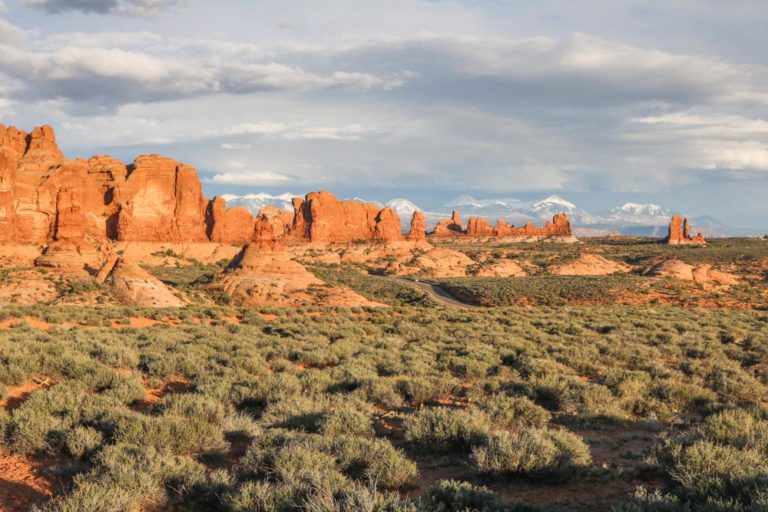Heavy Flooding and Rockslides Close ALL Entrances to Yellowstone National Park
This news story about the complete closure of Yellowstone National Park due to flooding is based on a June 13, 2022, National Park Service press release. You can read the original release here.
Unprecedented amounts of rainfall caused heavy flooding, rockslides and mudslides all over Yellowstone National Park. This has created “extremely hazardous conditions,” the National Park Service said.
Due to these severe weather conditions, the park has temporarily closed all entrances to Yellowstone National Park.
Earlier on Monday, June 13, the park reported that visitors in the park’s northern portion were being evacuated, although the Park Service didn’t specify the number of people affected by this.
Now, an updated report announced the closure of all Yellowstone National Park entrances.

Yellowstone National Park Closed Due to Flooding and Rockslides
The Park Service said that “effective immediately, no inbound visitor traffic will be allowed into the park until conditions stabilize and the park can assess damage to roads and bridges and other facilities. This includes visitors with lodging and camping reservations.”
These are the Yellowstone entrances that are closed because of heavy flooding and landslides across the national park:
- North
- Northeast
- West
- South
- East
The park didn’t yet offer any information on how long the closures would last. However, they did say that “many park roads may remain closed for an extended period of time.”
In the press release, the Park Service said that “preliminary assessments show multiple sections of roads throughout the park have been either washed out or covered in mud or rocks, and multiple bridges may be affected.”

Most major roads in the northern portion of Yellowstone had already been closed to all traffic, but the park now reports there are several roads in the southern part that are about to be flooded, too.
Additionally, multiple locations throughout the park are currently without power. The Park Service also warned that there could be serious strains on wastewater and water treatment facilities. Precautions are being taken to make sure those facilities remain in operation.

The weather forecast for Yellowstone National Park predicts even more rainfall in the upcoming days and the park “does not want large numbers of day-use visitors stranded in the park.”
Water levels in the Yellowstone River are (already) beyond record levels.
These unusually severe weather conditions are why Yellowstone National Park management has temporarily closed to entire park to all visitors.
Anyone who’s planning on visiting Yellowstone National Park in the near future should pay close attention to updates on road conditions. Parts of the park may not be accessible for a significant period of time, and visitors should come prepared to change their plans.

“The National Park Service, surrounding counties and state of Montana and Wyoming will work with the gateway communities to evaluate flooding impacts and provide support to residents,” the park said.
You can find more information and updates on the Yellowstone National Park website: Park Roads.
Additionally, you can also get Yellowstone road alerts on your phone: text “82190” to 888-777 (an automatic text reply will confirm receipt and provide instructions).
The video below shows the extensive damage caused by the raging Gardner River between Mammoth Hot Springs and Gardiner, Montana. (This is the link to the original video footage published by Yellowstone National Park.)

Statement by Yellowstone Superintendent on Park Closure
“Due to record flooding events in the park and more precipitation in the forecast, we have made the decision to close Yellowstone to all inbound visitation,” said superintendent Cam Sholly.
“Our first priority has been to evacuate the northern section of the park where we have multiple road and bridge failures, mudslides and other issues. The community of Gardiner is currently isolated, and we are working with the county and State of Montana to provide necessary support to residents, who are currently without water and power in some areas. Due to predictions of higher flood levels in areas of the park’s southern loop, in addition to concerns with water and wastewater systems, we will begin to move visitors in the southern loop out of the park later today in coordination with our in-park business partners.”
Sholly also remarked that Yellowstone National Park management “will not know timing of the park’s reopening until flood waters subside and we’re able to assess the damage throughout the park. It is likely that the northern loop will be closed for a substantial amount of time.”
“I appreciate the efforts of the Yellowstone team and partners to safely evacuate areas of the park and of our gateway community partners who are helping us through this major event. We appreciate the support offered by the Department of Interior, National Park Service and the Montana and Wyoming governors,” he concluded.








